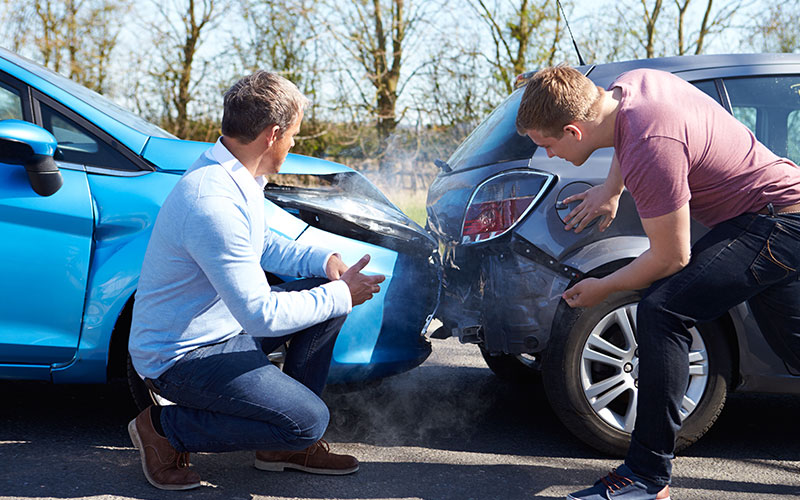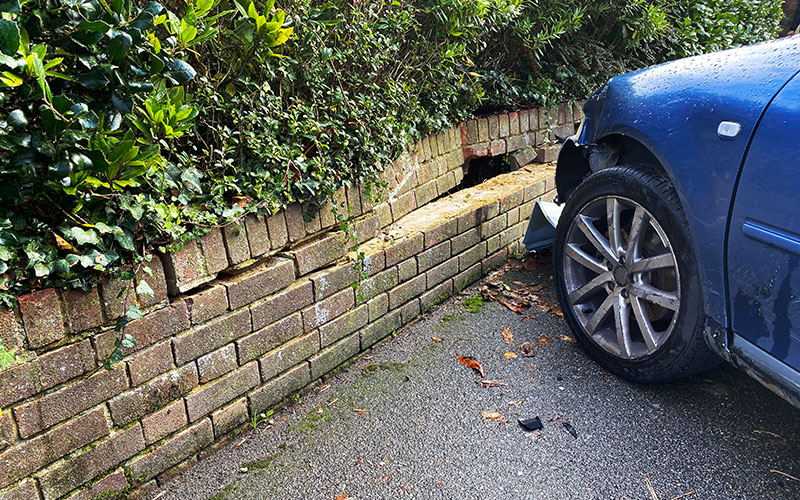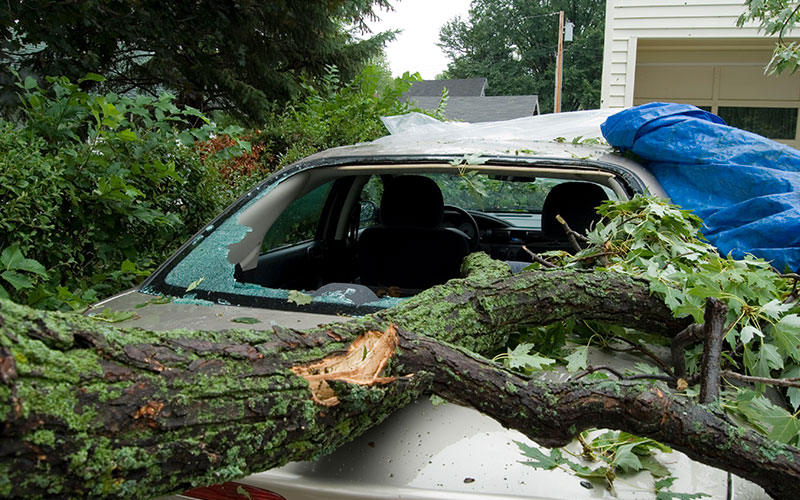We breakdown car insurance from liability coverage to insuring your classic to answer the question: How much car insurance to I actually need?
The Insurance Goldilocks Zone

With every new car purchase comes the necessity of buying car insurance. While insurance agents will regale you with worst-case scenarios and colorful anecdotes, this is one time where a healthy skepticism needs to take a backseat to pragmatism. Unlike extended warranty plans, which may or may not make financial sense, it’s often a good idea to carry more than the minimum liability insurance required by law. In this article, we breakdown the different types of automotive insurance and what they are designed to cover so you can know exactly how much insurance you really need.
Types of Coverage
There are various types of automotive insurance coverage to choose from. At minimum, most states (excepting New Hampshire) require all drivers to carry at least liability coverage which will kick in if the policy holder/driver is “at fault” in an accident. Beyond this bare minimum is an array of more extensive coverage options available.
The Minimum – Liability Insurance

Liability coverage breaks down to bodily injury liability, which covers medical expenses of other drivers and passengers in the other vehicle were the policy holder to cause an accident, and property damage liability, which covers damage to the other vehicle. Liability insurance is required in all states except New Hampshire, which still requires drivers to be financially responsible were they to cause an accident.
Additional Coverages
Collision Insurance

Covers the policy holder’s vehicle in case of an accident with another vehicle or object. This can be very important to have given that not all drivers actually carry insurance. Without collision (and/or comprehensive coverage) you could be staring down major repair and/or medical bills.
Comprehensive Insurance

Comprehensive coverage includes damage to your vehicle beyond that caused by a traffic accident. These fall under what insurers deem “acts of God” and cover such instances as fire, flood, storm, and hail damage. Both collision and comprehensive insurance is often required by lending institutions as part of a loan agreement, with the same going for dealer leases.
Uninsured or Underinsured Motorist Insurance

Beyond collision and comprehensive insurance, you may want to consider additional insurance that covers uninsured or underinsured motorists. Believe it or not, some folks out there on the roads are driving without insurance or their insurance has lapsed. In those cases, you’d be on the hook for repair and medical expenses, especially if you’re only carrying liability insurance yourself. Likewise, in the case of underinsured motorists, some liability policies may not cover the whole cost of repair or replacement if your vehicle is damaged by another motorist. In these instances, additional uninsured and underinsured motorist coverage would kick in.
Medical Payments Insurance (Med Pay)

Medical bills can run astronomically high. For these instances, medical payment insurance will cover both you and your passengers as well as other drivers and their passengers where any involved in an accident have medical expenses that exceed the limits of a typical policy.
Personal Injury Protection (PIP)

Though not available in all states, personal injury protection insurance further expands the umbrella of medical expenses to include items like lost income as the result of an injury or things like daycare for children or homecare of injured parties.
Gap Insurance

Gap insurance covers drivers in case an accident totals their vehicle and the policy payout is less than the amount they own on their loan. With depreciation at its steepest within the first few years a vehicle is on the road, some car loans can be “underwater” for a period of time. Gap insurance literally fills in that gap between the current value of the vehicle and the amount owed on it.
New Car Replacement Insurance

These policies cover cars less than 3-years old. Like gap insurance, new car replacement policies make up the difference between the current market value (with depreciation factored in) and the cost to replace the vehicle. Because depreciation is strongest within those first three years, the difference can be anywhere from 20-60 percent depending on the vehicle. This is valuable coverage to have if you’re buying new rather than used.
Glass Insurance

You can even get additional glass insurance to replace windshields that crack. This is also valuable if your vehicle’s safety equipment is integrated into the windshield, as is the case with Subaru’s EyeSight system.
Ride-Share Insurance

This coverage is intended for those driving a vehicle for commercial purposes like driving for Uber, Lyft, or another ride-share company. The high mileages and number of passengers can necessitate additional coverage. Often such companies will also carry insurance on your behalf.
Collector Car and Supercar Insurance

For those looking to insure their collector car or exotic/supercar, there are different policies. This is because collectors’ cars and supercars are more difficult and costly to repair or replace. Parts and qualified mechanics can be difficult to find. Premiums tend to be high, and in the case of supercars much higher, than those of policies intended for daily drivers. In both cases, the insurance company will want to make a valuation on the vehicle to determine what an appropriate premium would be (there are additional factors beyond the car itself which we get to below). They will consider the age of the vehicle, parts availability, complexity and rarity, and other factors. In almost all cases, a collector’s car or supercar will be classified as a “spare” car by your insurance company, meaning it’s not driven often.
What Influences My Premium?

While collectors’ cars and supercars carry their own special policies, other cars can also cost more to insure. Sports cars and those with higher horsepower or even just those with turbocharging will be more costly to insure.
But speed and expense are just a few of the factors that insurance company actuaries account for when determining your premium. They’ll also want to know about your driving history, looking for traffic violations and accidents, and credit history, which is often used as a proxy for general responsibleness. Other factors include insurance history, looking into the frequency and nature of claims, and demography information like gender, age, profession, housing status, and even geographic location (accounting for areas prone to vehicle theft or those with high traffic volumes). Most companies suffice with a few of these bits of information before providing a premium quote.
Whether you’re a broke teenager looking to get by on liability insurance or an auto-enthusiast looking to insure your next project car, make sure to consider all your insurance options and shop around for quotes before purchasing your next car insurance policy.









